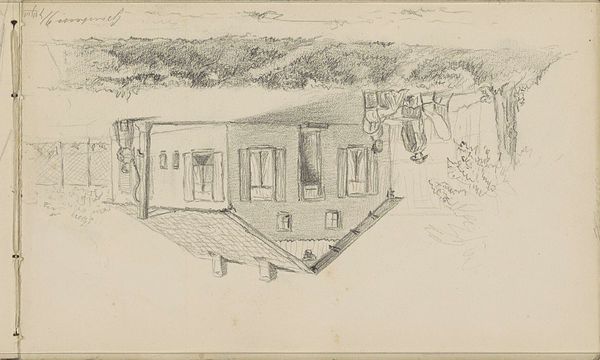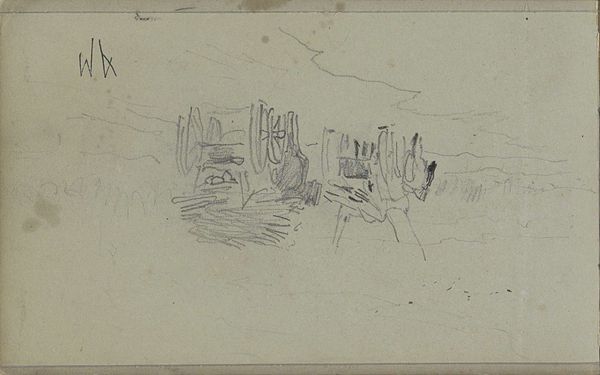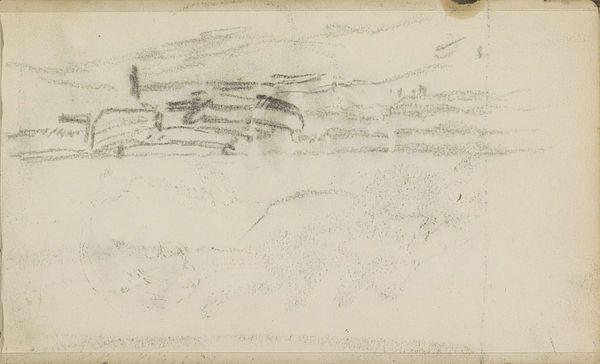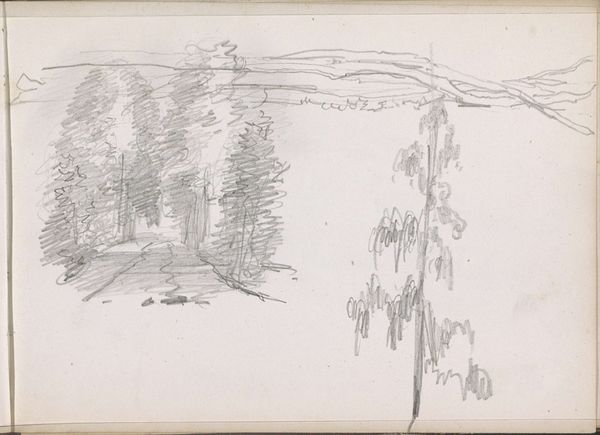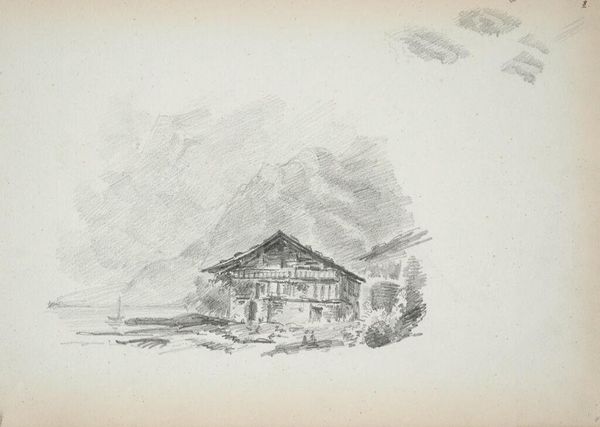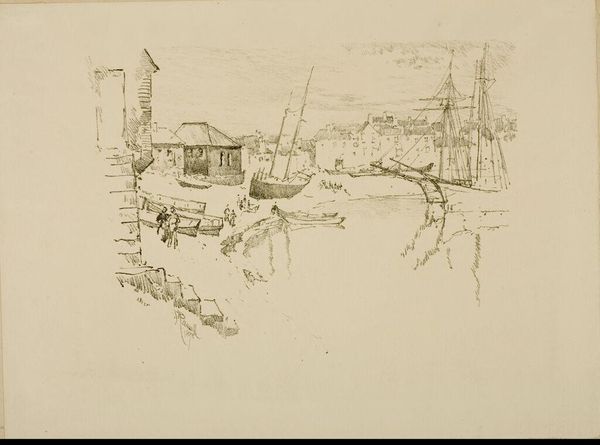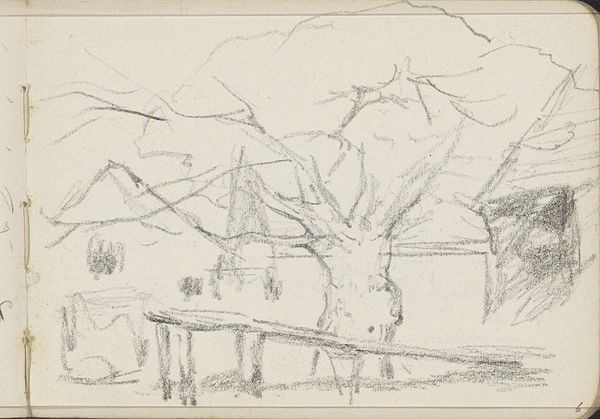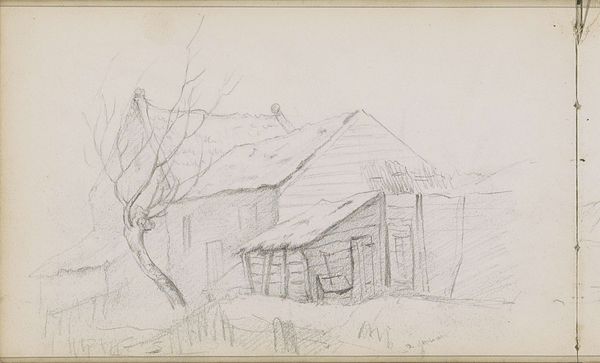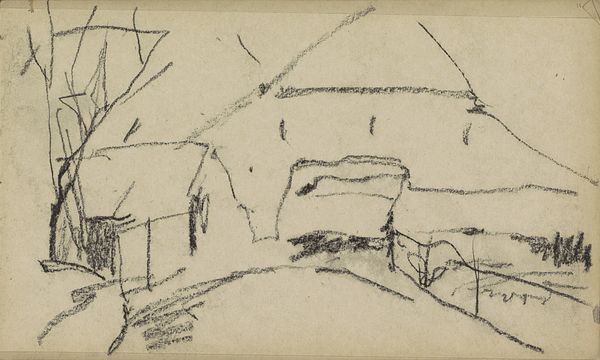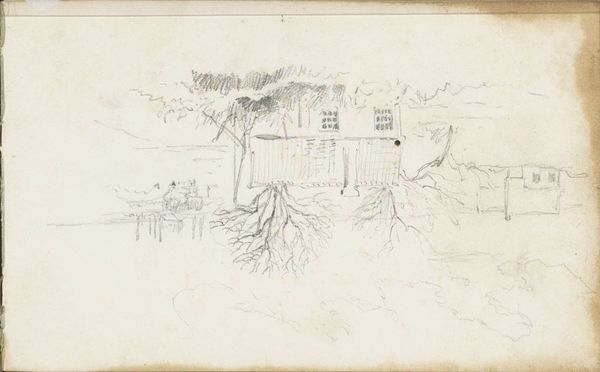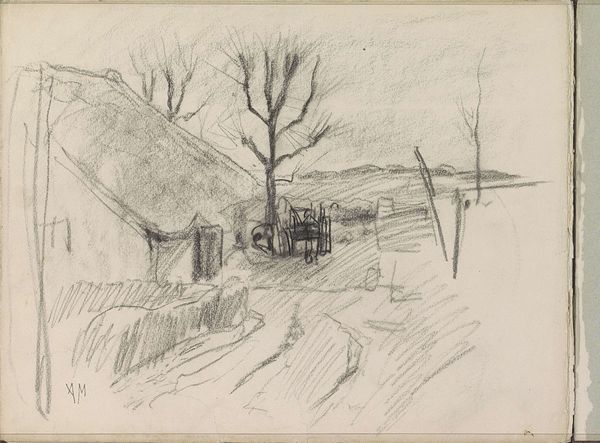
drawing, pencil
#
drawing
#
amateur sketch
#
light pencil work
#
quirky sketch
#
incomplete sketchy
#
landscape
#
personal sketchbook
#
road
#
idea generation sketch
#
ink drawing experimentation
#
pencil
#
sketchbook drawing
#
sketchbook art
#
realism
#
initial sketch
Copyright: Rijks Museum: Open Domain
Curator: This is Johan Hendrik Weissenbruch's "Plattelandswoning aan een weg," likely created sometime between 1834 and 1903, and it currently resides here at the Rijksmuseum. Editor: My first impression is of a simple, almost ephemeral rendering of a rural scene. The pencil work is so delicate. Curator: Yes, the delicacy points to the likely purpose of this piece. The sketch captures a vernacular architectural structure of the working class, framing how landscape provides context to community development through accessible, well-trod roads and byways. Editor: Considering Weissenbruch's commitment to depicting the Dutch landscape, the labor involved in forming the terrain—clearing, building, path-making—is almost palpably felt, even in such a spare sketch. It emphasizes how such terrains are shaped by human intervention. Curator: Absolutely. The positioning of the figure by the building is key too. The drawing offers insight into the societal structures and norms that have formed around rural, gendered roles and perhaps speaks to a specific regional culture and its evolution during Weissenbruch's time. Who resides in these homes and in what relation to labor and land? Editor: That simple figure suddenly holds so much meaning when framed that way. What seems like a straightforward depiction reveals layers when you consider the labor interwoven within such spaces, like in the craft of its carpentry and material adaptation. Curator: The way the drawing lacks refinement encourages us to analyze how it interacts with larger historical, sociological concerns. Is this a preliminary sketch exploring space? Does that individual have ownership over this land, and what systemic opportunities might or might not be at their disposal? These questions need unpacking. Editor: Right. Viewing it through this lens moves it beyond being merely a 'sketch' to being a prompt to examine the systems shaping those country roads, those houses, and lives lived in their vicinity. Curator: Exactly. Art as both record and a beginning. Editor: Food for thought in very subtle, sketchy lines.
Comments
No comments
Be the first to comment and join the conversation on the ultimate creative platform.

